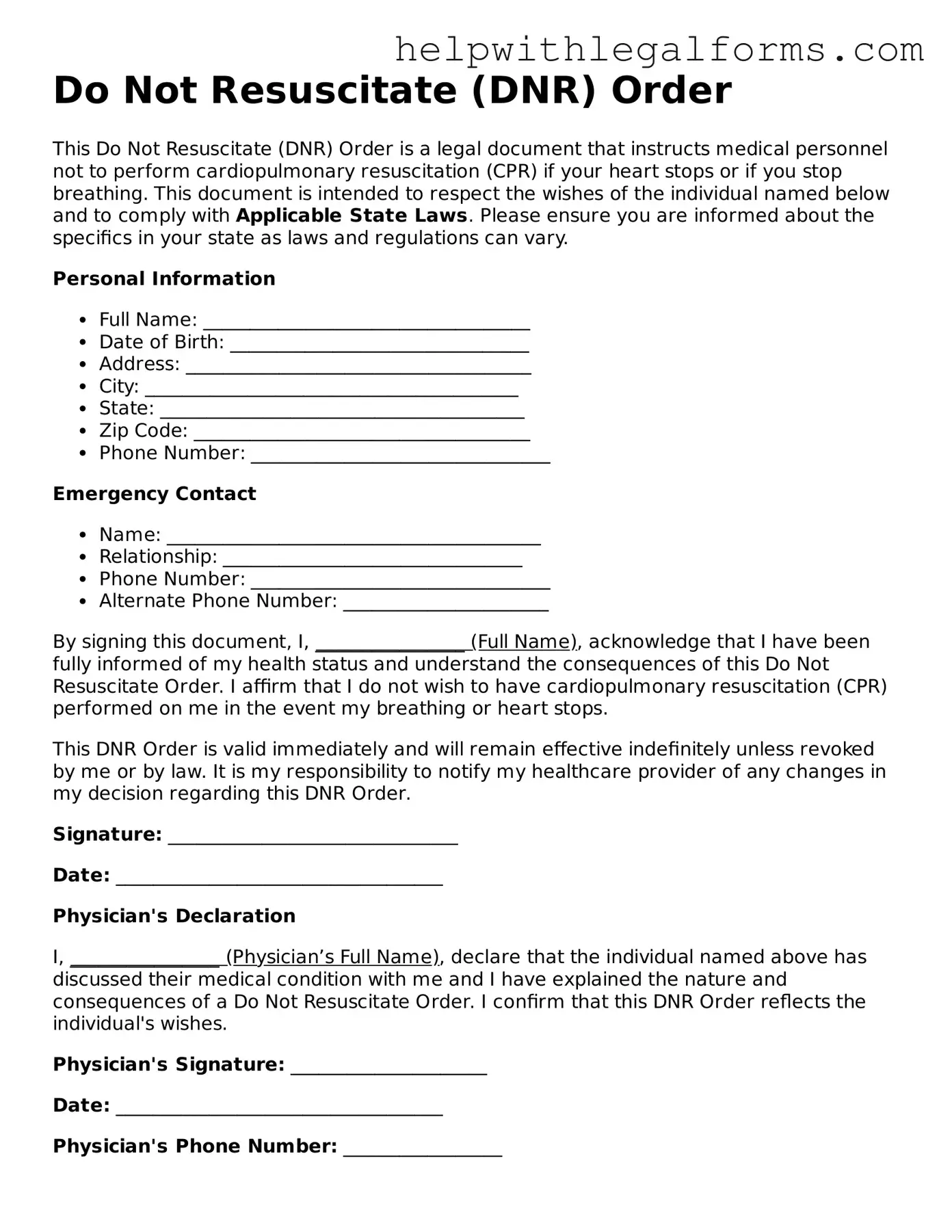Do Not Resuscitate (DNR) Order
This Do Not Resuscitate (DNR) Order is a legal document that instructs medical personnel not to perform cardiopulmonary resuscitation (CPR) if your heart stops or if you stop breathing. This document is intended to respect the wishes of the individual named below and to comply with Applicable State Laws. Please ensure you are informed about the specifics in your state as laws and regulations can vary.
Personal Information
- Full Name: ___________________________________
- Date of Birth: ________________________________
- Address: _____________________________________
- City: ________________________________________
- State: _______________________________________
- Zip Code: ____________________________________
- Phone Number: ________________________________
Emergency Contact
- Name: ________________________________________
- Relationship: ________________________________
- Phone Number: ________________________________
- Alternate Phone Number: ______________________
By signing this document, I, ________________ (Full Name), acknowledge that I have been fully informed of my health status and understand the consequences of this Do Not Resuscitate Order. I affirm that I do not wish to have cardiopulmonary resuscitation (CPR) performed on me in the event my breathing or heart stops.
This DNR Order is valid immediately and will remain effective indefinitely unless revoked by me or by law. It is my responsibility to notify my healthcare provider of any changes in my decision regarding this DNR Order.
Signature: _______________________________
Date: ___________________________________
Physician's Declaration
I, ________________ (Physician’s Full Name), declare that the individual named above has discussed their medical condition with me and I have explained the nature and consequences of a Do Not Resuscitate Order. I confirm that this DNR Order reflects the individual's wishes.
Physician's Signature: _____________________
Date: ___________________________________
Physician's Phone Number: _________________
Note: Please review and ensure compliance with the laws of your specific state regarding Do Not Resuscitate Orders. Some states may require notarization or additional documentation for this document to be considered legally valid.
